Pediculati
You want ugly? YOU GOT UGLY. Pediculati includes some of the weirdest, ugliest fishes on the planet, that not even a mother could love. These fishes are found in reefs, at the bottom of the ocean, and everywhere in between. And everywhere they go, they bring the ugly. So dive in and take a look...

By Noel Weathers [CC BY 2.0], via Wikimedia Commons
Batrachoidiformes: Toadfishes
There is only one family, Batrachoididae. They get their name because they kind of look like toads, which is harsh to toads. They usually just chill on the bottom, camouflaged, waiting for prey to come along. Males of many species can use muscles attached to their swim bladder to produce sound, which is used to attract mates. The subfamily Thalassophryninae has two hollow spines in its dorsal fin, which it can use to inject venom into those who dare to step on it.
Lophiiformes: Anglerfishes
This group gets their name from their method of prey capture. The first dorsal spine has become extremely modified into a lure, which is often luminescent. The lure itself is known as an illicium, and the bioluminescent organ is known as an esca. This attracts prety towards the mouth, after which the angler eats the prey. The teeth are also modified, being depressible, so that prey can push past the teeth to enter the mouth, but has difficulty exiting.
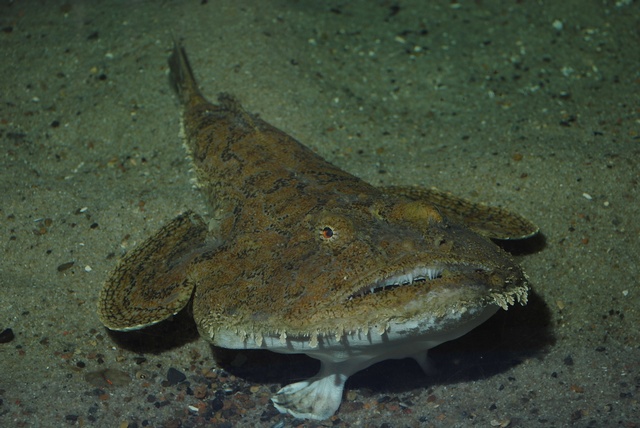
Lophioidei: Monkfishes, Goosefishes
There is only one family, Lophiidae. These fishes have a flattened body, and a wide, enlarged mouth, with the lower jaw jutting out. They have flabby bodies, which taper after the head. Monkfishes lie in wait on the bottom for prey to be attracted to their lures. Although quite hideous, they taste much better than they look.
Antennarioidei
This group has cephalic (head) spines, with one of them modified into the lure. Their pectoral fins are kind of funky, being more jointed than in other groups, similar to an arm.
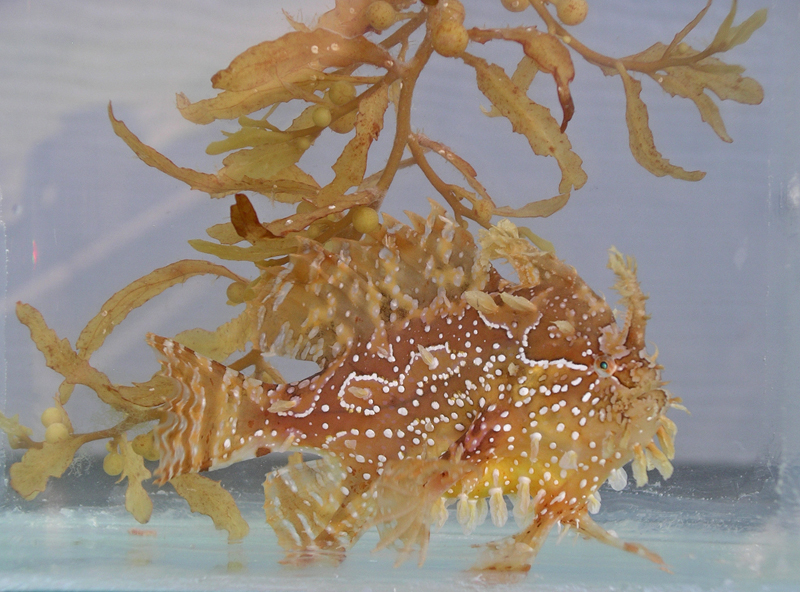
Antennariidae: Frogfishes
These short, squat fishes are masters of camouflage. They can be all sorts of colors, and they can be covered with growths to help with their disguises. The lure is often modified to be shaped like a worm, in order to better attract prey. This family includes the Sargassum fish, Histrio histrio. This fish lives in sargassum seaweed, and is disguised with leafy growths on its fins.
Tetrabrachiidae: Tetrabranchiid Frogfishes
There's not much info on these fellers. They have an elongate and compressed body, and a teensy mouth. They get their name because their fins give them a look as if they had "four arms."
Lophichthyidae: Lophichthyid Frogfishes
There is only one species, Lophichthys boschmai. It is different than other frogfishes because it does not have an enlarged, rounded head.
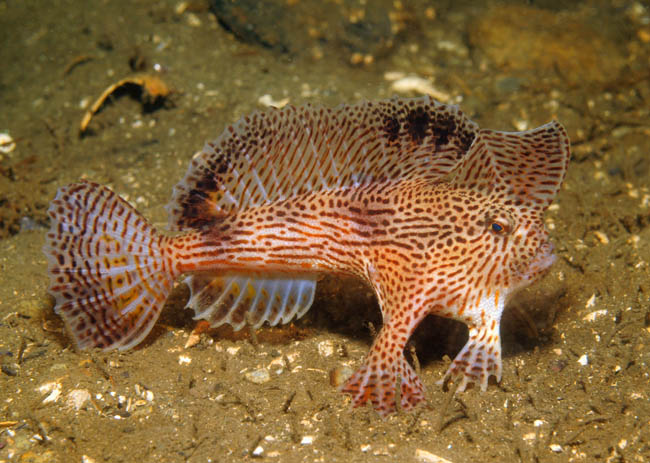
Brachionichthyidae: Handfishes (Warty Anglers)
These fishies don't swim, they walk...on their hands! They get their name because of their modified pectoral fins, which allow them to walk around the bottom. The name "warty anglers" comes from their modified scales, which are similar to denticles.

Gilles San Martin / CC BY-SA (https://creativecommons.org/licenses/by-sa/3.0)
Ogcocephalioidei: Batfishes
There is one family, Ogcocephalidae. These fishes are recognizable by their comparitively large pectoral fins, on which they balance. The other fins are mostly reduced, and the body is triangular or box shaped, but flattened dorsoventrally like a pancake. Batfishes do not swim, but instead walk around on the bottom. The most attractive member of this group is Ogcocephalus darwini, the red-lipped batfish, which looks like it broke into its mother's makeup purse.
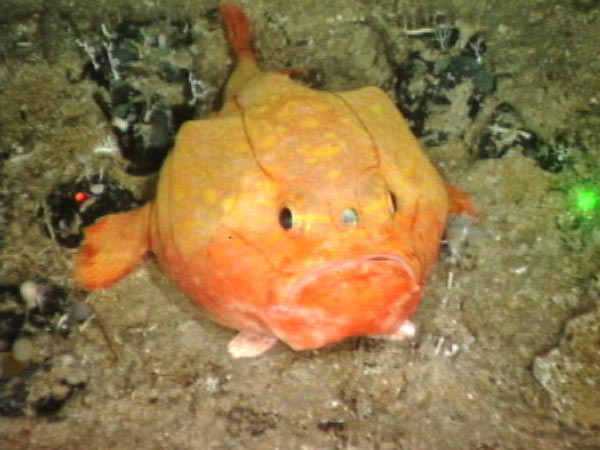
Chaunacoidei: Coffinfishes, Sea Toads
There is only one family, Chaunacidae. They have a rounded, flabby body, and the lateral line is especially obvious (large canals are easily visible). I'm not sure where the name "coffinfish" comes from...perhaps they often turn up in coffins, keeping the corpses company?
Ceratoidei: Anglerfishes
Do you have a wife? Does she make you buy her nice jewelry, and take her to fancy restaurants? It couldn't get much worse, could it? What if instead, when you first met your wife, you bit her, then slowly dissolved into a sac of gonads, permanently attached to her, only producing sperm. Maybe it could get worse...
Anglerfishes take the idea of sexual dimorphism to the extreme. If you've seen a picture of an anglerfish before, it was most likely a female. These fishes can be round or elongate, with large heads and even larger jaws. The male is much different, being much tinier than his female counterpart. When a male finds a female in the murky depths where they live, he will bite her, then become an external appendage, used to fertilize the females eggs.
What purpose does this serve? If you're living deep within the ocean, its awfully hard to find a mate, to produce more young. Maybe you only run into a member of the opposite sex once in your life. So how can you take advantage of this once-in-a-lifetime meeting? By making it permanent, of course. The male sacrifices his bachelor lifestyle in order to pass on his genes, insuring the existence of future generations of parasitic anglerfish men.
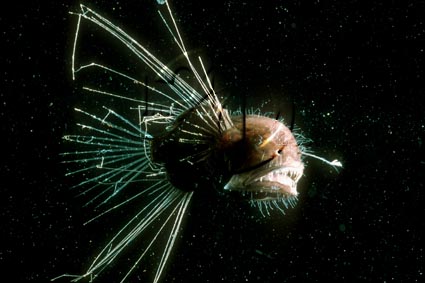
Caulophrynidae: Fanfins
Although this family has a lure on its head, it lacks the bioluminescent organ at the end. They are also characterized by elongated dorsal and anal fins.

Neoceratiidae: Toothed Seadevils
There is only one species, Neoceratias spinifer. If you thought other anglers were creepy, this one is SUPER creepy. Why? The females are instantly identifiable by the presence of teeth on the OUTSIDE OF THE JAWS. These outer teeth are hinged, and are in addition to the presence of smaller, inner teeth. This species is also set apart by the lack of a lure.
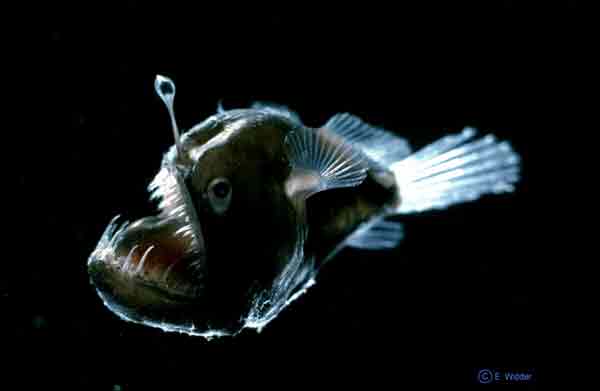
Melanocetidae: Black Seadevils
There is only one genus, Melanocetus. Obviously, memebers of this group are black, although they can be dark brown or red as well. Interestingly, the males of this family are free-living, and not parasitic as the rest of the anglers are.
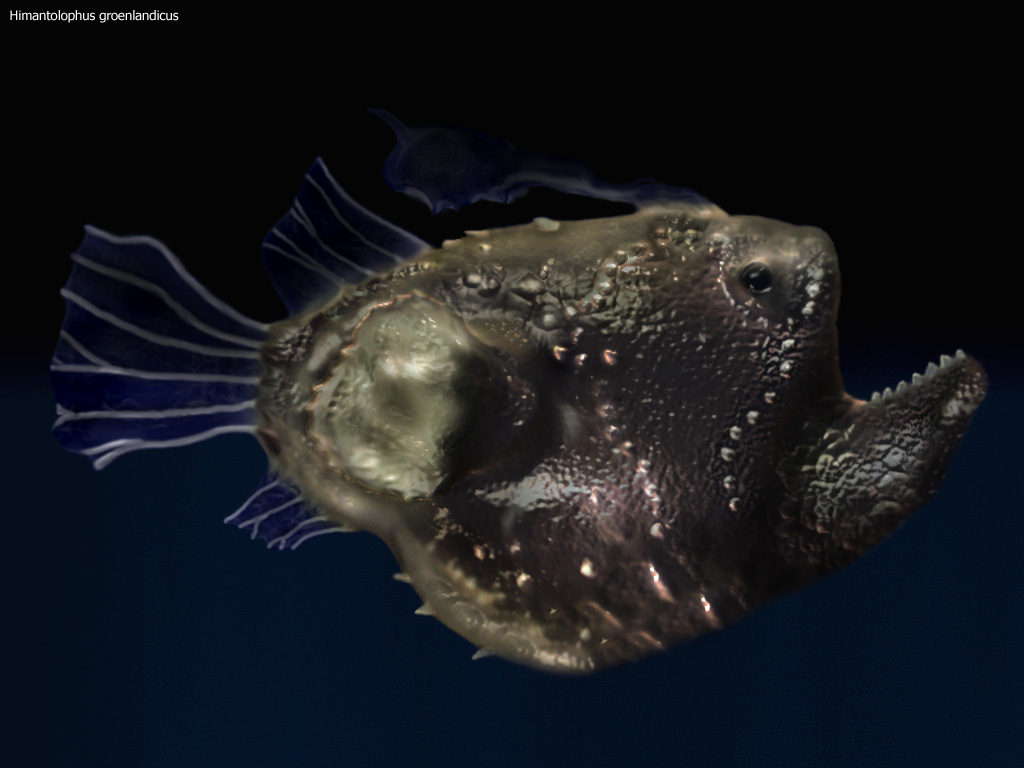
Himantolophidae: Footballfishes
If you want to toss around the ol' pigskin, but don't have a pigskin, try out a footballfish! There is only one genus, Himantolophus. The females are distinguished by the presence of round bony plates, which have a spine in the middle.
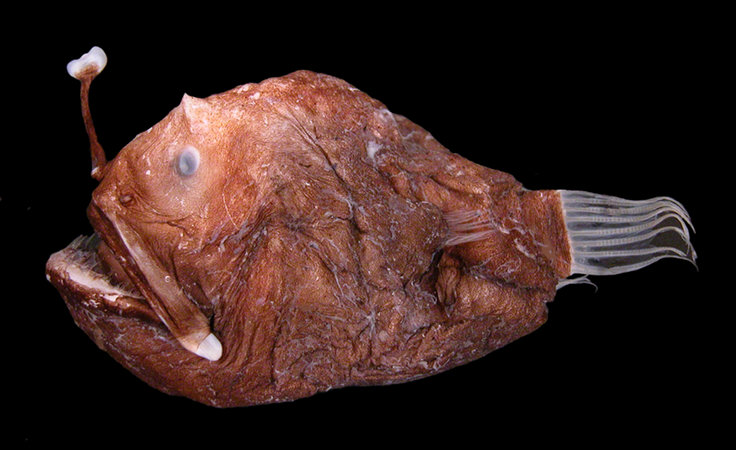
Diceratiidae: Double Anglers
These fishes get their name from the unique presence of a second, smaller lure, found behind the first one. These fishes are not very adventurous, as they have not developed any other exciting features. Moving on...
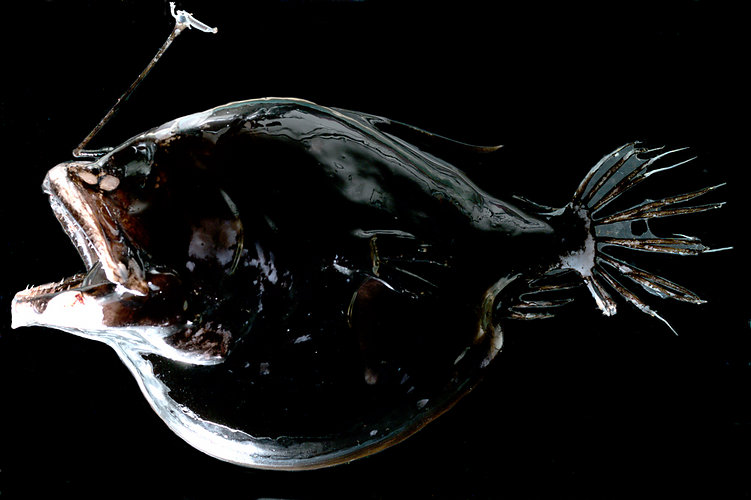
Oneirodidae: Dreamers
According to Fishbase.com, "the single known feature that serves to define this family is that metamorphosed females all possess an antedorsally directed, narrow, spatulate, process that extends over the posterolateral surface of the respective sphenotic." I think it means that they have something growing out of their heads.

Thaumatichthyidae: Wolftrap Anglers
This family has an extremely mobile premaxilla (upper jaw), which can be moved to close down upon the lower jaw. Both jaws are full of teeth, making it a perfect way to trap their prey.
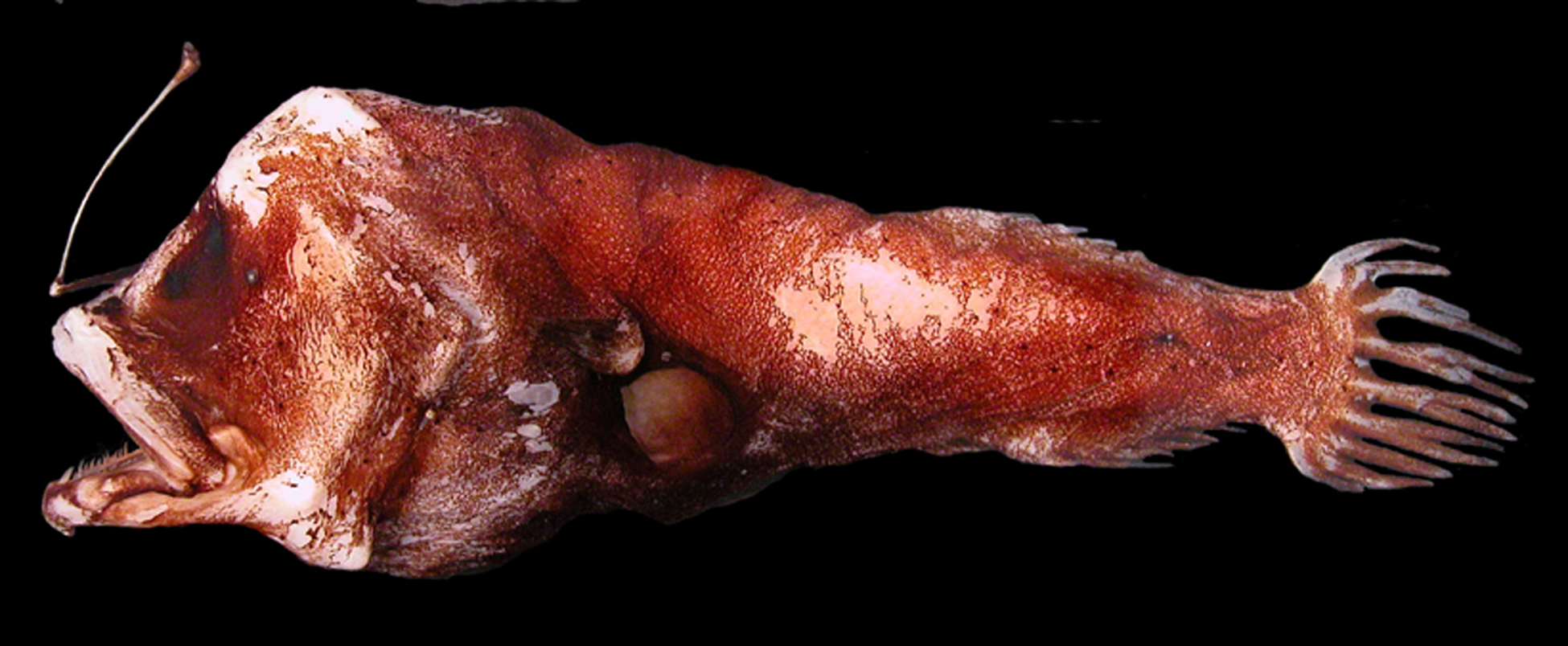
Centrophrynidae: Prickly Seadevil
There is only one species, Centrophryne spinulosa. This species is elongate and compressed laterally, with smaller teeth than most other anglerfishes. The younger members can be identified by their hyoid (chin) barbel.
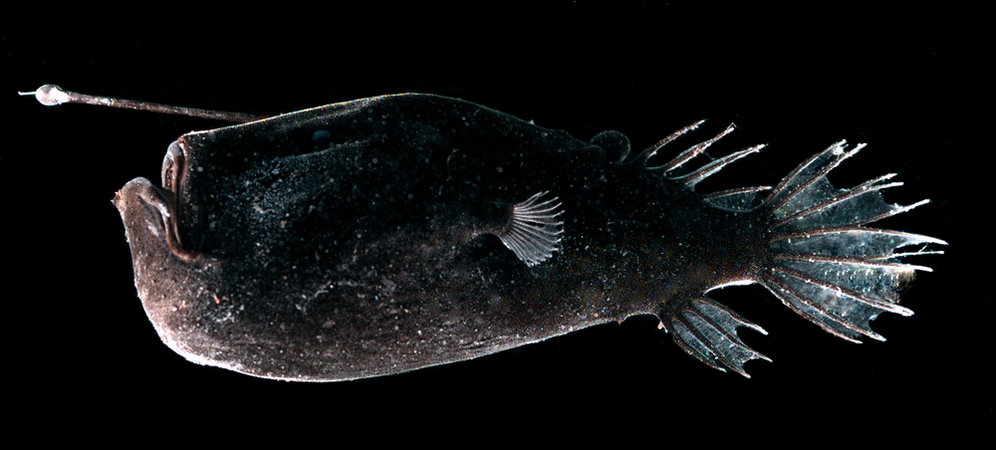
Ceratiidae: Seadevils
This family of anglers does not have many defining characteristics, besides an upwards pointed mouth and fleshy growths at the beginning of the dorsal fin.
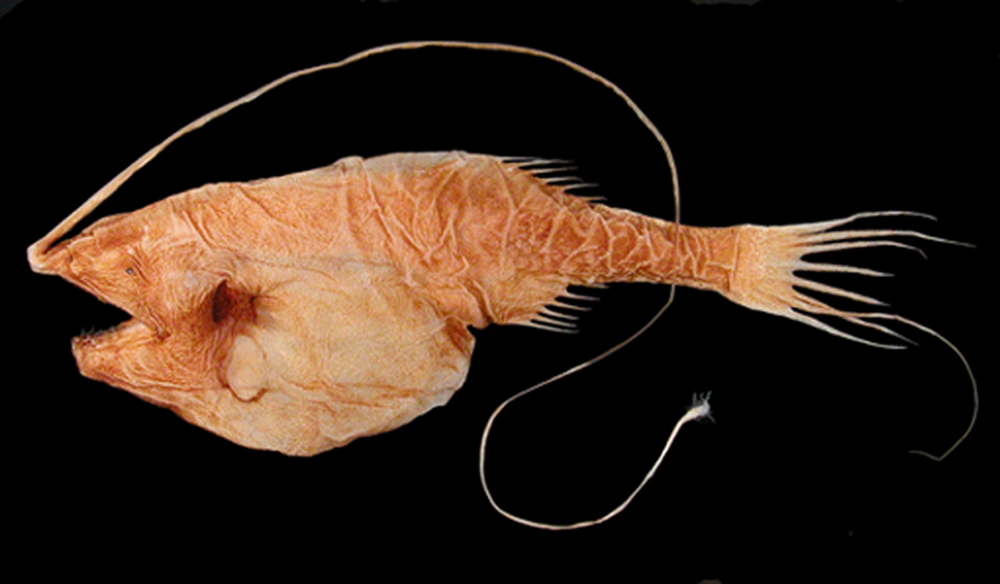
Gigantactinidae: Whipnose Anglers
The lure of this family can be as long, or longer, than the length of the body.
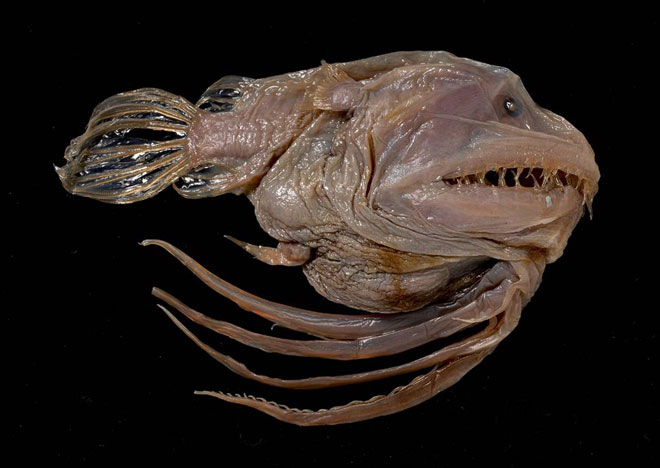
Linophrynidae: Leftvents
This family gets its name from the leftward location of the anus (get it...left vent?). Some species, in addition to the forehead lure, have an elaborate lure growing from the chin region.